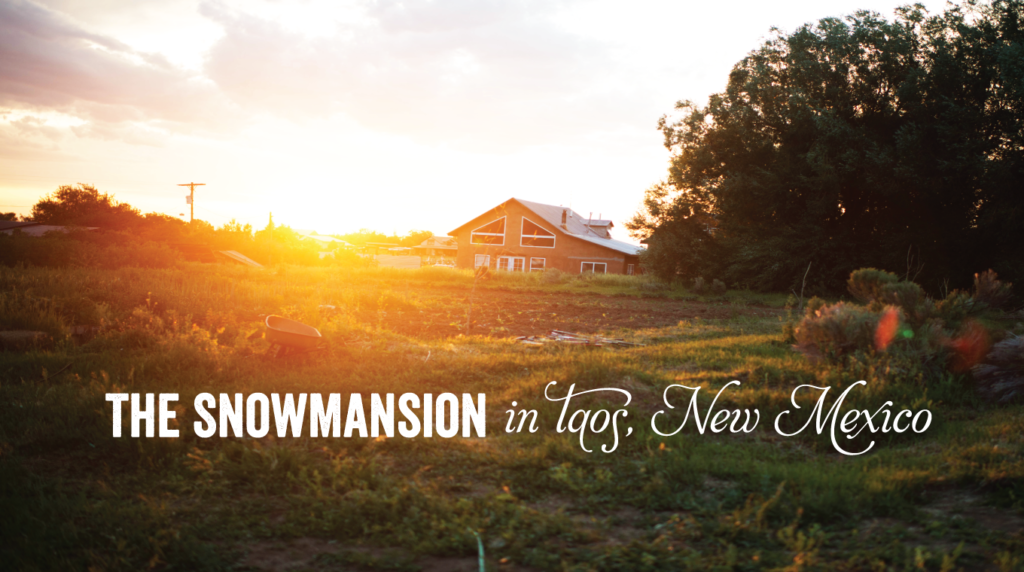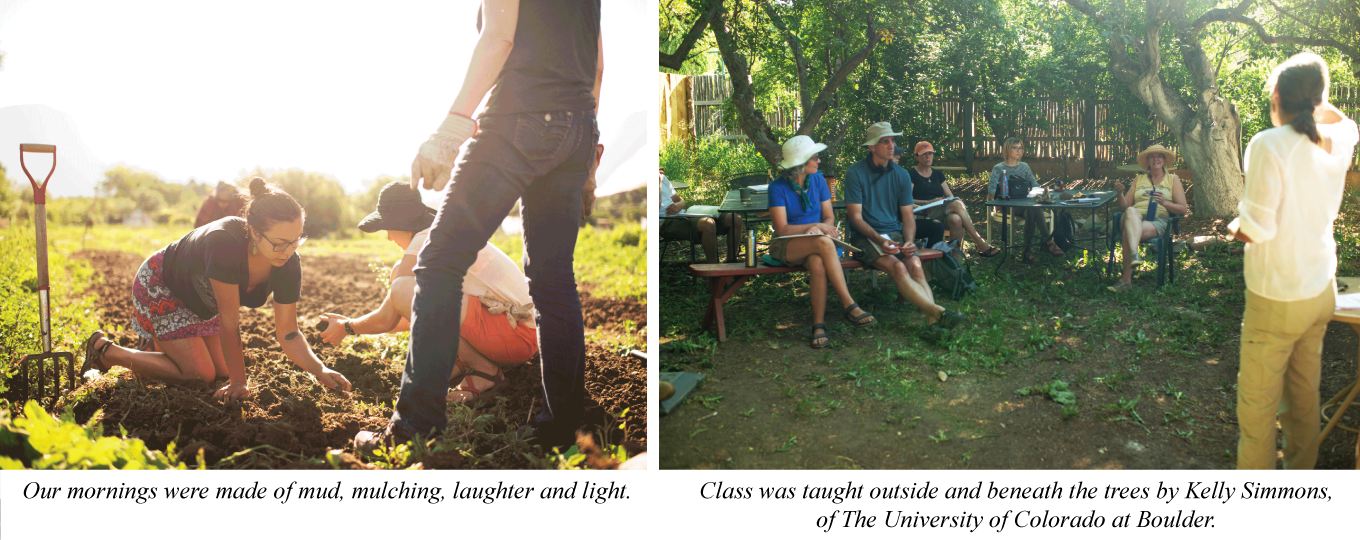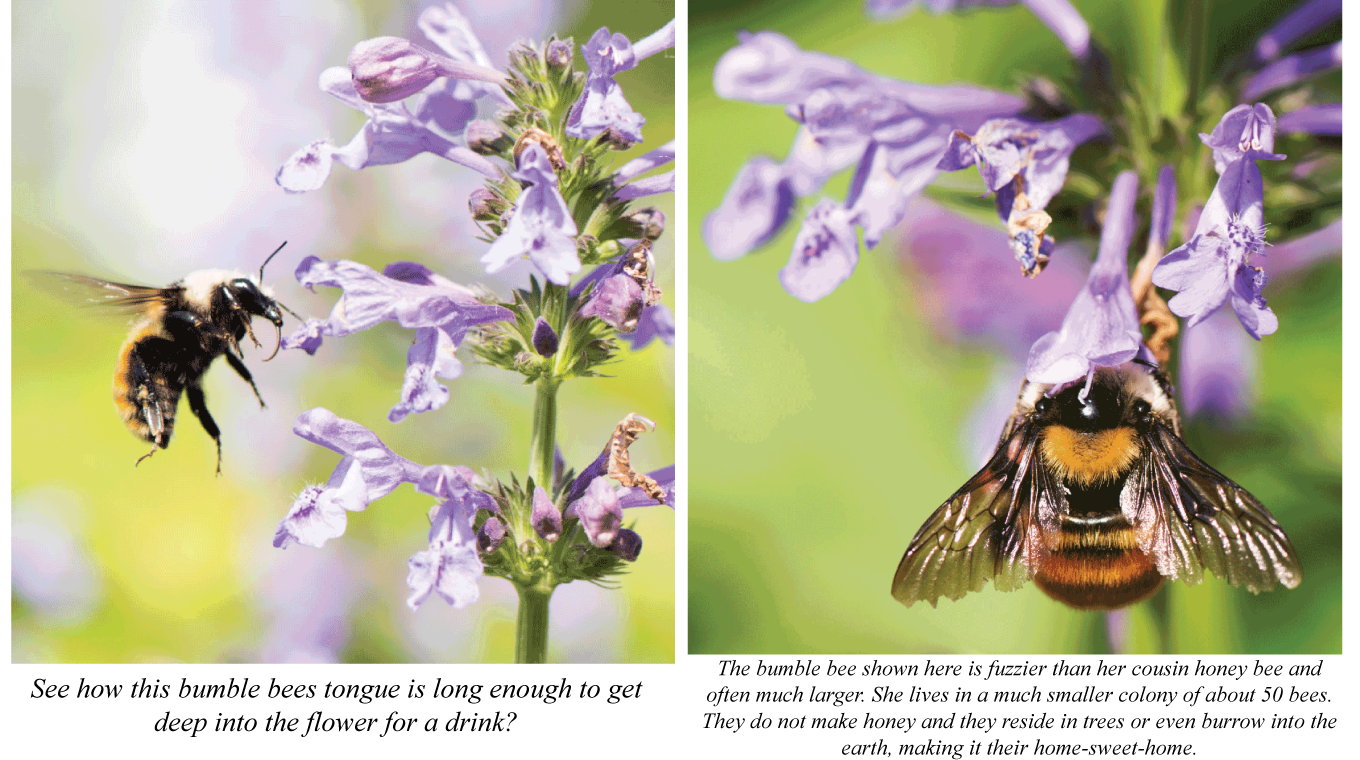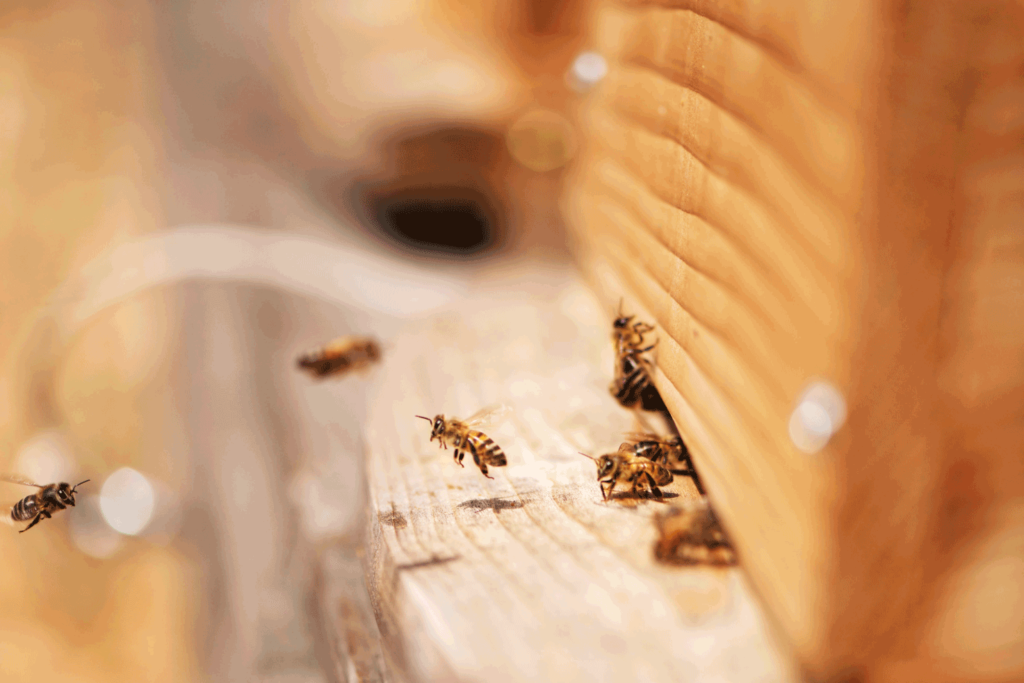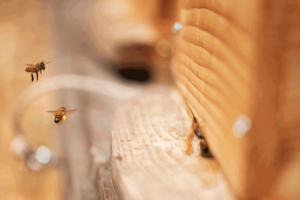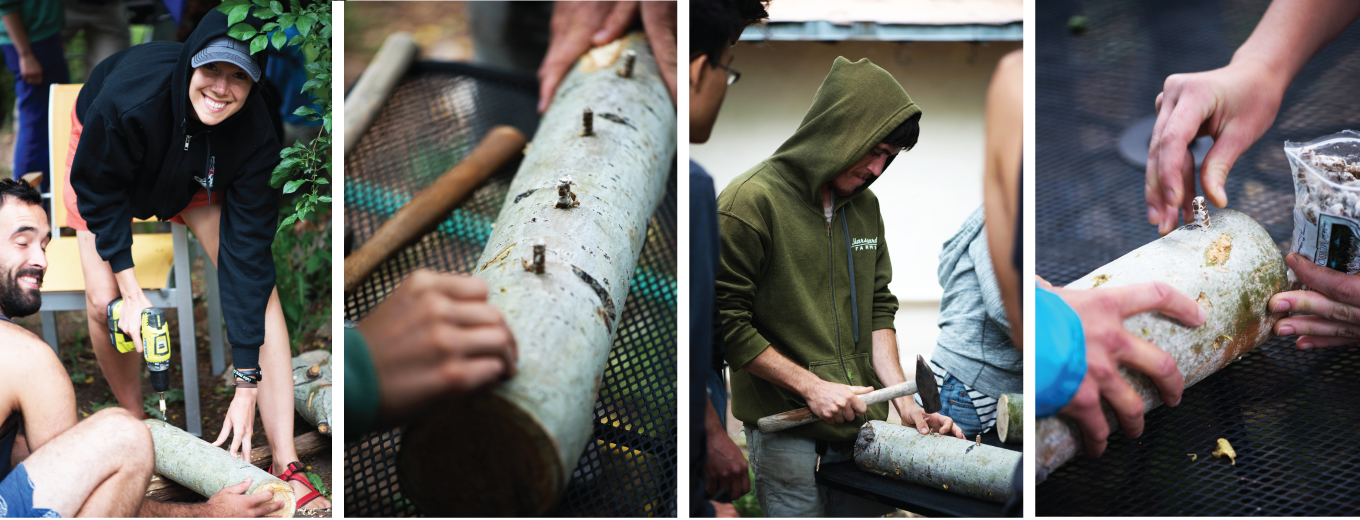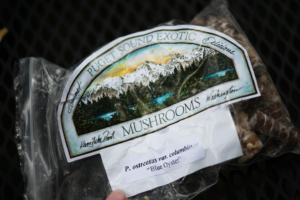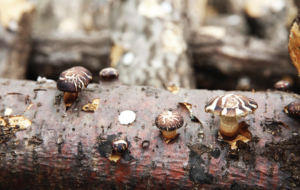For two weeks, I spent my vacation time at The SnowMansion, north of Taos, New Mexico, for a permaculture design course. Permaculture—derived from the two words “permanent” and “agriculture”—is a philosophy based on the concept of producing an abundance of food in a manner that won’t run out while at the same time, creating little or no waste. It’s derived from the template of nature: she produces in abundance, and rarely produces waste…for the benefit of us all.

This is an example of a “bee garden.” Bees tend to gravitate to blue and purple flowers. Their eyes have a type of color spectrum that draws them to the color. Through their eyes, they see patterns on those flowers that point to where the nectar is. Then, they stick out their long bee tongues and drink the flowers’ nectar.
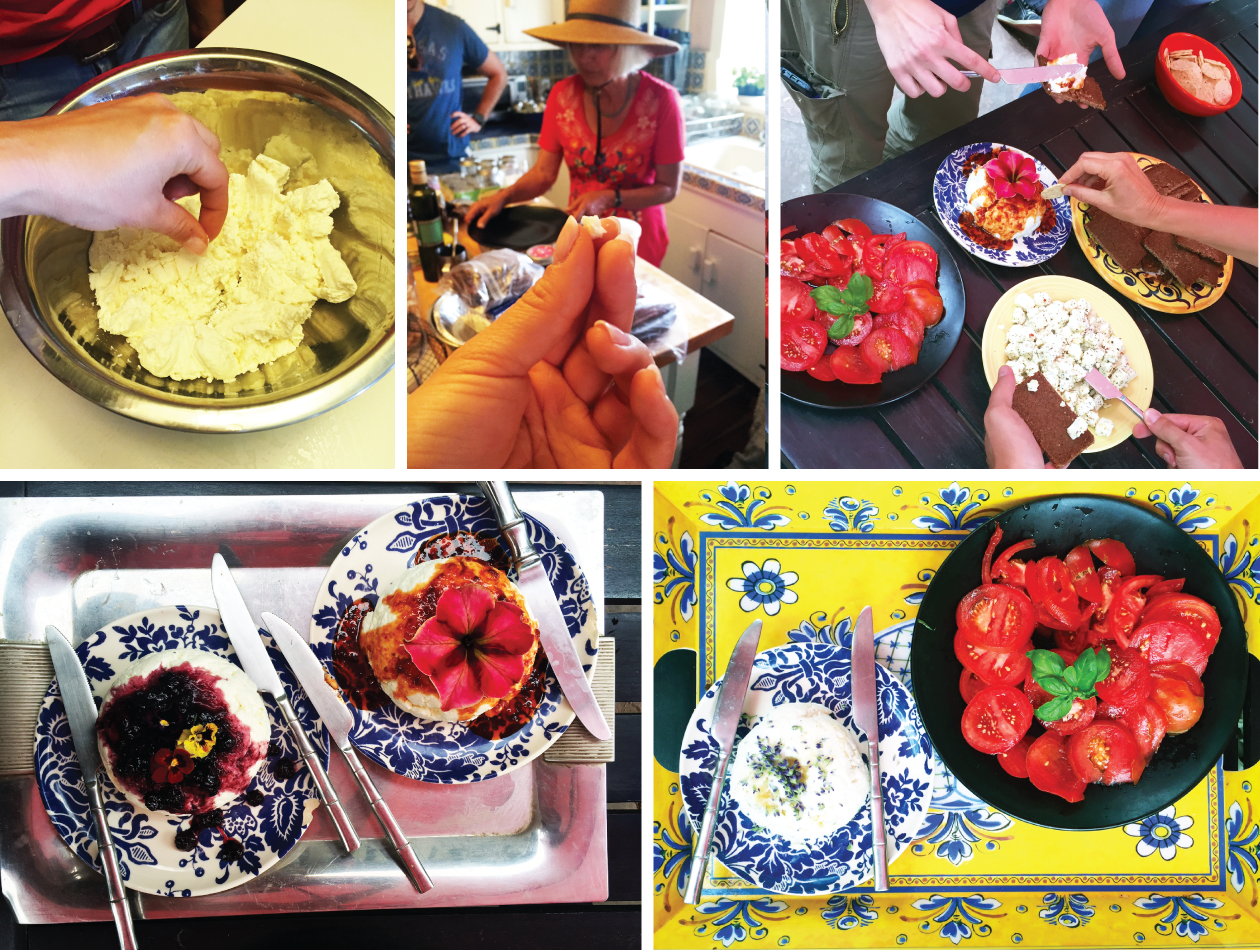 Raw goats milk, along with a bit of culture and rennet, covered and left for 18-24 hours, then strained through cloth and a colander, yields the most gorgeous raw cheese! Serve cheese with homemade berry or chili sauce. Fresh tomatoes from the garden are served with Brigid’s fresh raw honey, backyard lavender, and her famously simple raw goat cheese. Backyard to patio table: hyper local, uber fresh and nourishing for the body and soul!
Raw goats milk, along with a bit of culture and rennet, covered and left for 18-24 hours, then strained through cloth and a colander, yields the most gorgeous raw cheese! Serve cheese with homemade berry or chili sauce. Fresh tomatoes from the garden are served with Brigid’s fresh raw honey, backyard lavender, and her famously simple raw goat cheese. Backyard to patio table: hyper local, uber fresh and nourishing for the body and soul!
Check out Paul Stamens TED Talk, “Nine Ways Mushrooms will Save the World.” Did you know that mushrooms have taken over Chernobyl? The Albert Einstein School of Medicine finds that mushrooms, “have the capacity to use radioactivity as an energy source for making food and spurring their growth.” (Nuclear waste-metabolizing FUNGUS. Is that not insane!? Nature….)
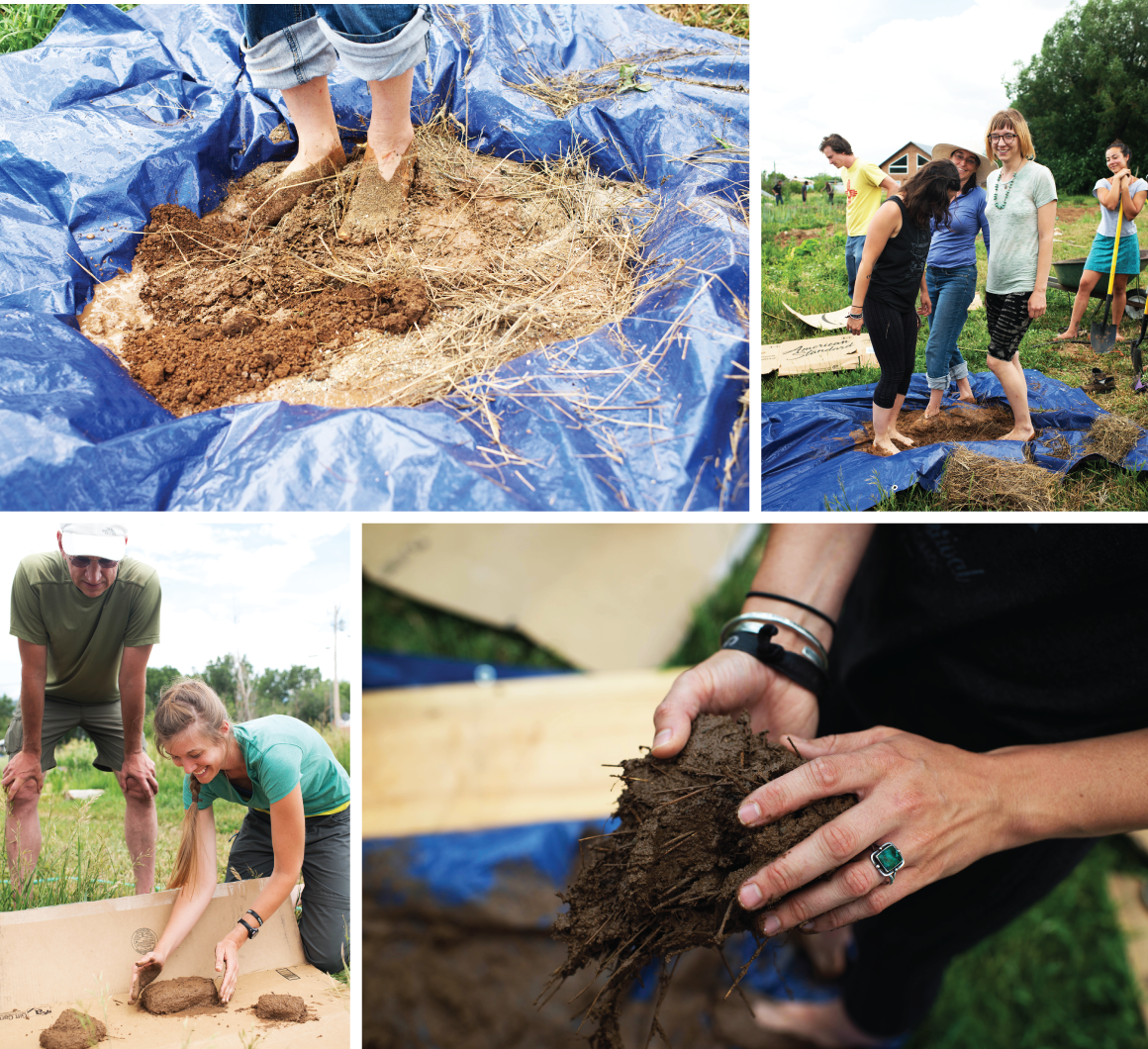 Cob is an extraordinary building material made of four simple ingredients: clay soil, sand, straw, and water. It is foot-mixed and feels a lot like cold dog poo between the toes. Since it’s NOT cold dog poo, however, it feels WONDERFUL! This elicits a reversal in aging while simultaneously softening the feet. (BONUS!) Cob structures act as thermal mass, heating you in the winter and cooling you in the summer.
Cob is an extraordinary building material made of four simple ingredients: clay soil, sand, straw, and water. It is foot-mixed and feels a lot like cold dog poo between the toes. Since it’s NOT cold dog poo, however, it feels WONDERFUL! This elicits a reversal in aging while simultaneously softening the feet. (BONUS!) Cob structures act as thermal mass, heating you in the winter and cooling you in the summer.